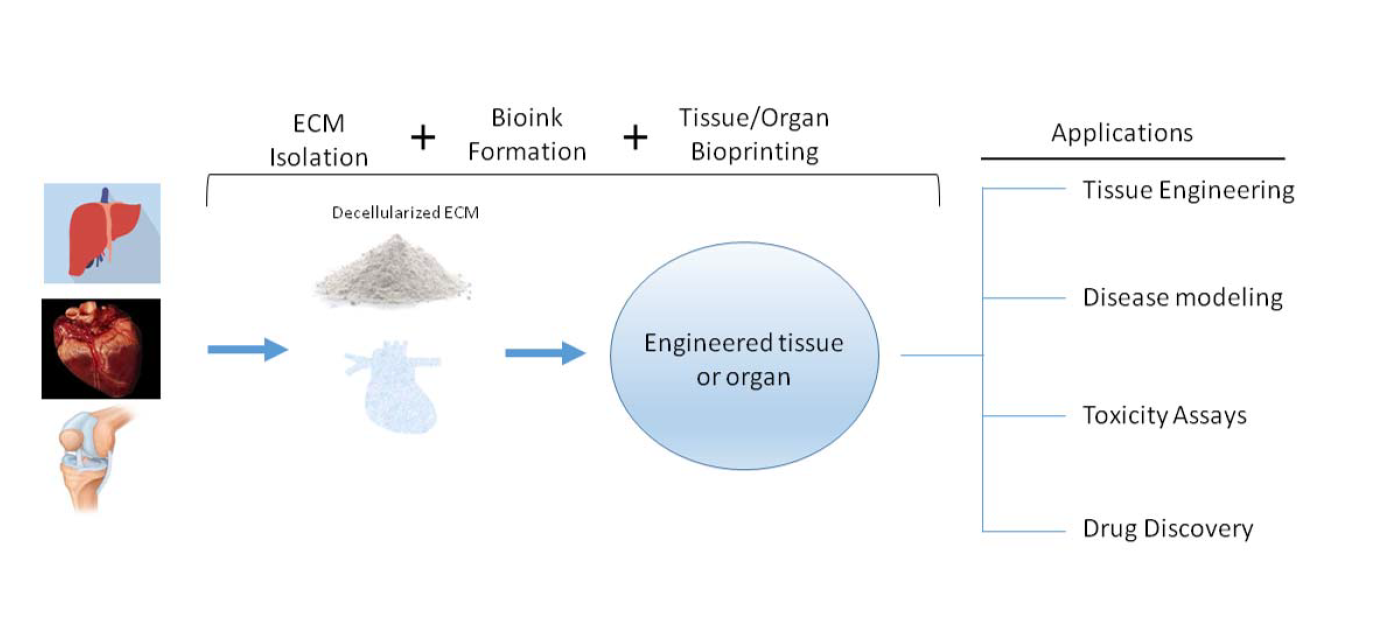Abstract: The promise of regenerative medicine and tissue engineering is founded on the ability to regenerate diseased or damaged tissues and organs into functional tissues and organs or the creation of new tissues and organs altogether. In theory, all damaged and diseased tissues and organs can be regenerated or created using different configurations and combinations of extracellular matrix, cells and inductive biomolecules. Currently, regenerative medicine and tissue engineering can allow the improvement of patients’ quality of life through availing novel treatment options. Tissues and organs have a specific ECM, with specific proteins and factors released by cells residing within the local microenvironment. The coupling of regenerative medicine and tissue engineering field with 3D printing is revolutionizing the treatment of patients in a huge way. 3D bioprinting allows the proper placement of cells and ECMs, allowing the recapitulation of native microenvironments of tissues and organs. 3D bioprinting utilizes different bioinks made up of different formulations of ECM/biomaterials, biomolecules and even cells. The choice of the bioink used during 3D bioprinting is very important as properties such as printability, compatibility and physical strength influence the final construct printed. The extracellular matrix (ECM) provides both physical and mechanical microenvironment needed by cells to survive and proliferate. Decellularized ECM bioink contains biochemical cues from the original native ECM and also the right proportions of ECM proteins. Different techniques and characterization methods are used to derive bioinks from several tissues and organs and to evaluate their quality. This review discusses the uses of decellularized ECM bioinks and argues that they represent the most biomimetic bioinks available. In addition, we briefly discuss some polymer-based bioinks utilized in 3D bioprinting.

